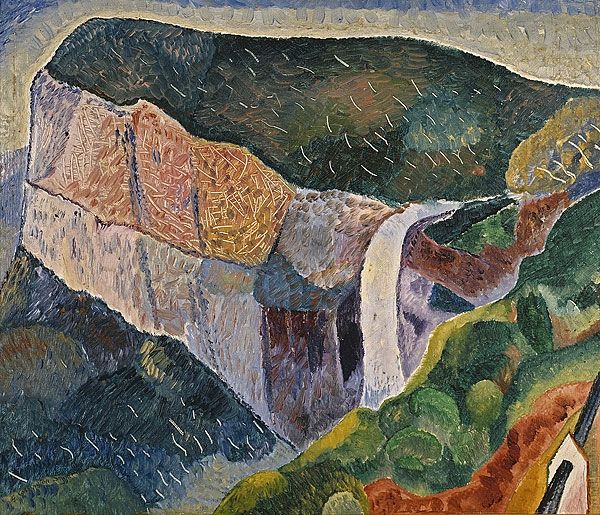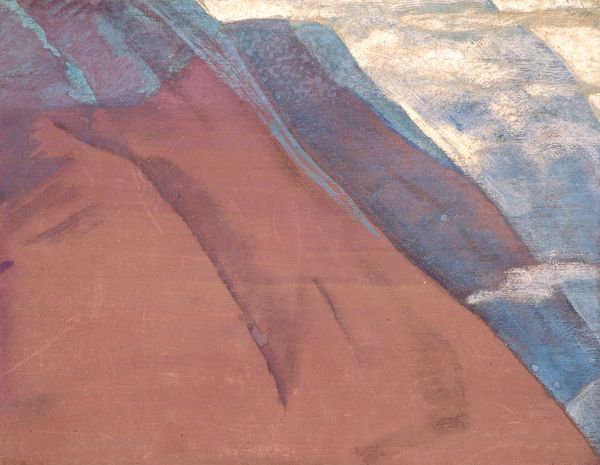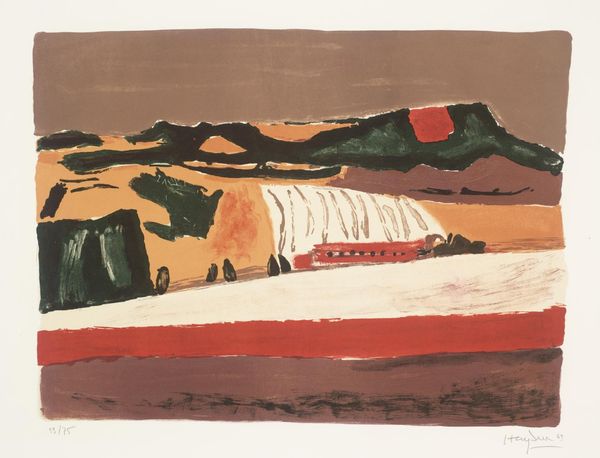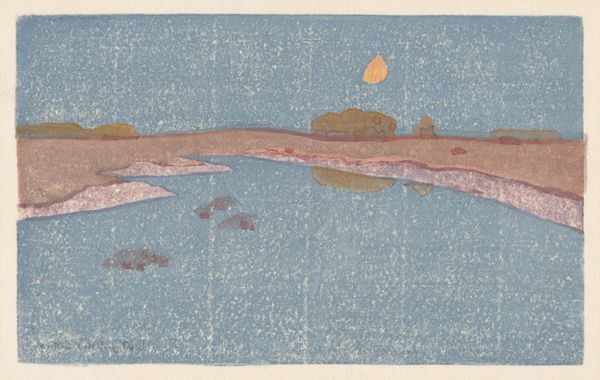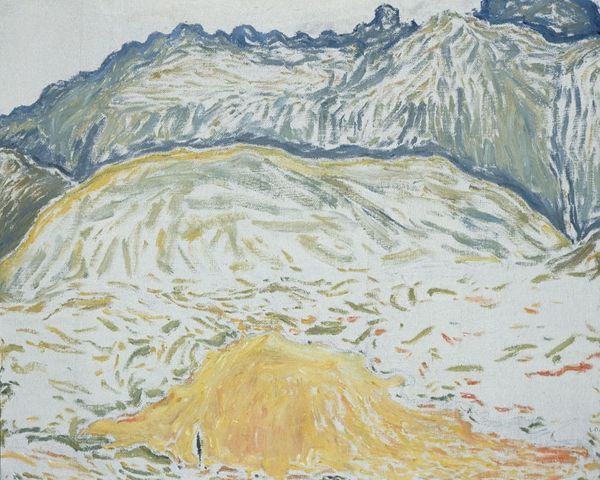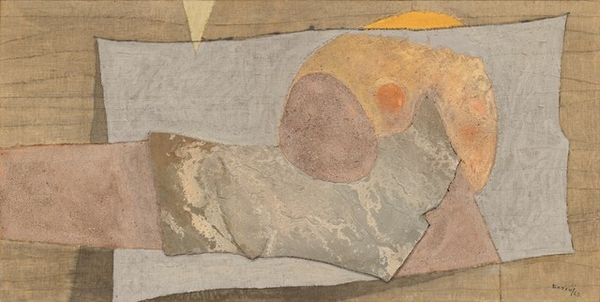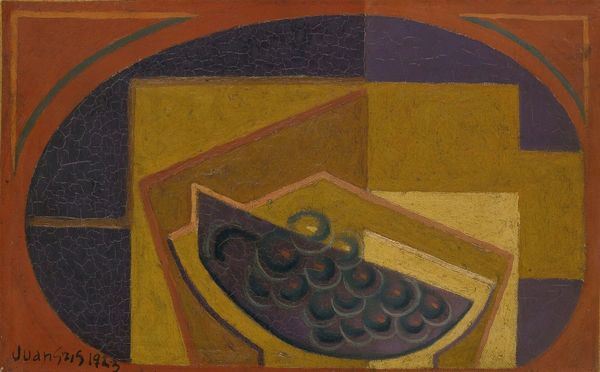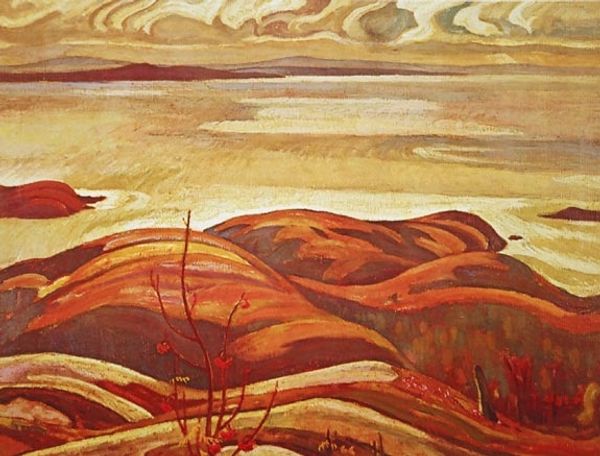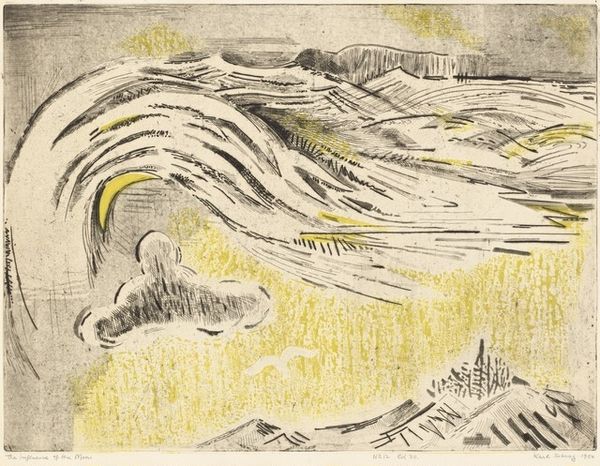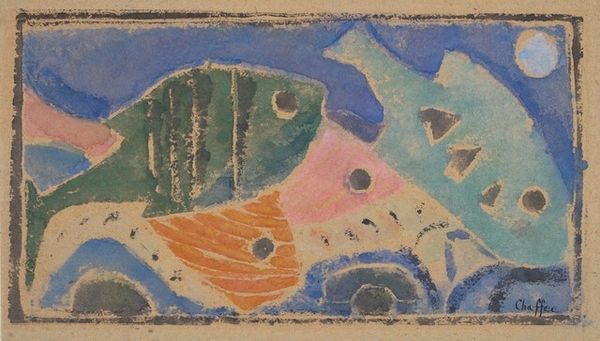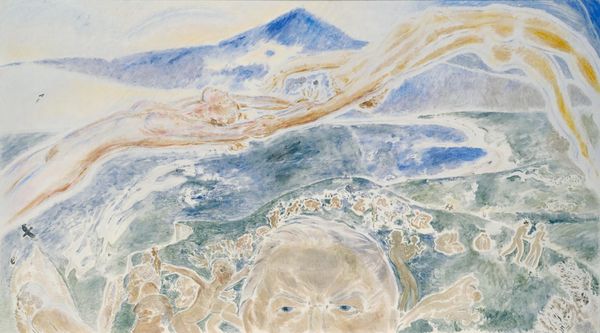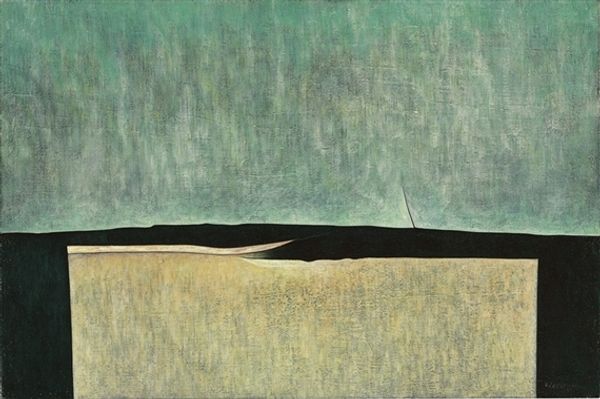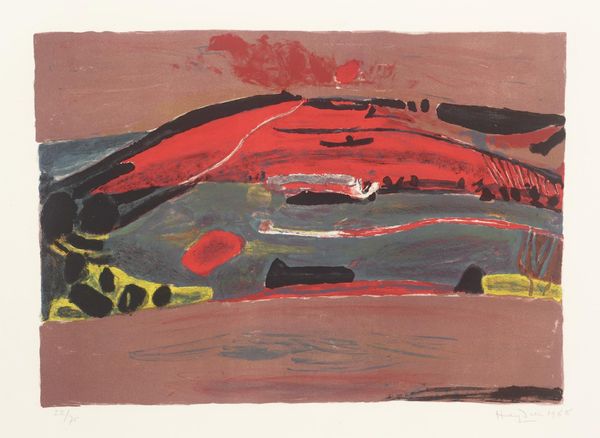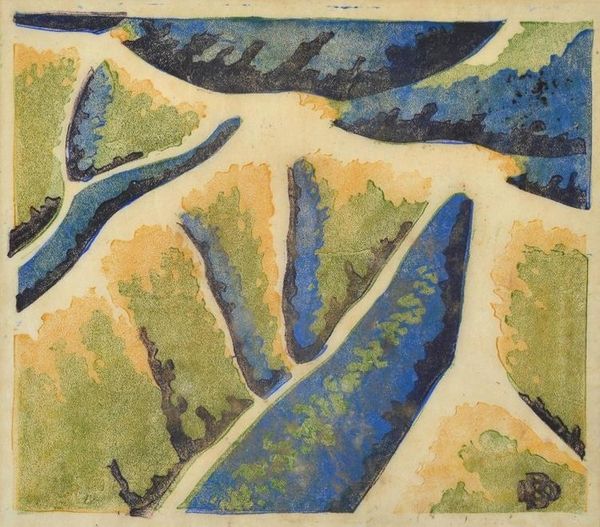
plein-air, watercolor
#
plein-air
#
landscape
#
oil painting
#
watercolor
#
geometric
#
watercolour illustration
#
modernism
Copyright: Grace Cossington Smith,Fair Use
Editor: This is Grace Cossington Smith’s "Black Mountain," painted in 1931 using oil and watercolour in the plein-air style. It has a sort of flattened, abstracted quality to it, which gives it an almost dreamlike feeling, but I'm curious what your perspective is? What stands out to you when you look at this piece? Curator: What immediately captures my attention is how Cossington Smith negotiates modernism within the Australian landscape tradition. It's not just about painting what she sees, but about constructing a specifically modern vision. This was the interwar period and how Australia defined itself mattered. Consider how the flattening of space and simplified forms diverge from traditional landscape painting, signalling a shift towards a new national artistic identity. Does this choice say something about the burgeoning Australian cultural independence from Europe at this time, do you think? Editor: I see what you mean. The simplified shapes feel very deliberate, like she’s almost making a statement with her choices. Perhaps that bold red line cutting through the middle suggests ownership and imposed control over the land? Curator: That's a fascinating interpretation. That bold line might also symbolize a disruption, a dividing line between the natural and the human-altered environments. The painting engages with a broader discussion around land use and national identity. In what ways do public perceptions or artistic presentations, such as this work, shape policy or challenge public narratives related to our country and heritage? Editor: Thinking about it that way adds another layer of depth. It is not just a pretty picture of a landscape, but a commentary on a place and time. Curator: Exactly, and by engaging with the history and cultural implications behind Cossington Smith’s choices, we begin to unravel the many dimensions of the work and, hopefully, consider the enduring effect it has. Editor: This has definitely given me a much deeper understanding of how to view art, appreciating not just what is on the surface, but how that vision connects with its socio-political environment.
Comments
No comments
Be the first to comment and join the conversation on the ultimate creative platform.
